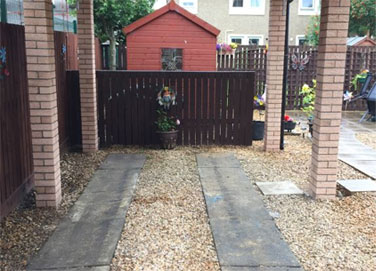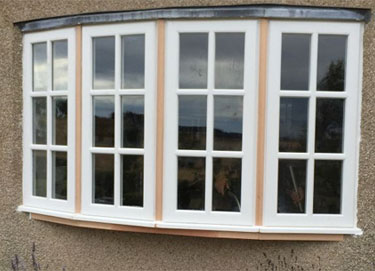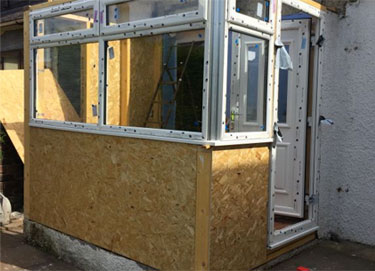Underlay is a barrier that sits beneath your flooring.
There are several types of underlay and these can be used in different ways.
Some make it easier to install your flooring, but all of them are primarily used to protect against environmental factors like moisture and temperature.
When choosing your new floor you should keep in mind that there are many products, including laminate and engineered floors, which require the use of underlay for a successful floating installation.
Here at LC Joinery we can offer a variety of different styles including rubber, foam and liquid underlay.
Each product has its own unique attributes so you are sure to find something that is perfect for you.
Eliminating Uneven Subfloors
Uneven subfloor issues are responsible for many flooring problems. Fortunately there are several options to correct this. One option is to use an underlay designed to eliminate uneven subfloors and solve any problems without extra work.
Insulation with Built in Damp Proof Membrane
When installing a new floor over a concrete subfloor it is recommended that you use a flooring underlay with a built in Damp Proof Membrane (DPM).
This will give your floor an extra layer of protection against moisture. This helps to prevent potential damage, as too much moisture can make wood floors expand and buckle.
Underlay with Thermal Insulation
Thermal insulation in your underlay is not just a matter of comfort, it can also save money by keeping the room warm and therefore lowering the cost of heating.
All flooring underlay provides thermal insulation to some extent as an extra layer to your flooring; however you can find products specifically designed for thermal insulation that are far better equipped for this purpose.
Sound Reduction Underlay
Flooring underlay with sound reduction qualities prevents noise travelling to rooms below.
This is ideal for homes with other residents living below as it allows for a greater degree of privacy and prevents disturbing neighbours.
It is also popular in office blocks where a lot of noise from the floor above can be very distracting.
Use Underlay with Under Floor Heating
If the room you are installing your new floor in has under floor heating then it is essential that you choose underlay and flooring which is designed to be used with it.
If the products you choose are not designed to let air circulate it can cause the UFH system to overheat.
How To Choose The Perfect Laminate Underlay
Which type of underfloor to choose?
There is a suitable type of underlay for every room and situation. Stop a moment to think about what you need exactly.
- Is this a room in which you be walking around only sporadically, such as a bedroom or an attic? If so, you could opt for our budget-friendly Quick-Step Basic Plus underlay.
- Or will you be installing your floor in a living room or a kitchen, which is a much more high-traffic area? If so, a sound-absorbing underlay would be a better choice, like our Quick-Step Unisound.
- Do you want to keep out the noise of footsteps to the greatest extent possible in order to create a serene working or living environment? In this case, Quick-Step Silent Walk it is exactly what you need. This is also the perfect underlay in case you have underfloor heating!
- Will you be installing a laminate floor on the top floor of a house or in an apartment? Block out transit noise with our Quick-Step Transitsound underlay.
- If the floor onto which you will be laying your laminate is rather irregular, or if you plan to install it on top of an existing tile floor, our Quick-Step Thermolevel underlay is your best option: this underlay smooths out every irregularity in the subfloor (irregularities apt to a maximum of 4 mm).
Check out QuickStep Underlay range by clicking here
Underlayment over plywood/wooden sub-floors:
If your sub-floor is made of wood, then there is a big range of underlays to choose from and your final selection should be based on a few factors that are described below.
If you want to create a quite environment in to the room you are fitting your laminate flooring (an office for example), or you live in a flat or apartment, the best option would be to invest in a sound resistant underlay.
A rubber underlay will not only provide you with an outstanding impact sound and in-room noise insulation, but will also protect your laminate flooring against moisture migration from the sub-floor.
In addition to that, it provides thermal and shock insulation.
Light Foam: About half the cost of felt, polyethylene foam is the cheapest underlayment you can buy. At 1.5 pounds per 100 square feet, this 3 mm thick foam underlayment smooths the subfloor but does little to absorb sound.
Heavy Foam: Heavier, more expensive closed-cell foam underlayment. At 2.2 pounds per 100 square feet, this material has better sound absorption qualities as opposed to the lighter foam but does not approach felt’s heaviness.
Felt: Recycled fibers compose felt underlayment. This 3 mm thick underlayment has a heavier, more cloth-like feel and tends to smooth down better than foam underlayment. Weighing 12.5 pounds per 100 square feet, felt underlayment is over 450 percent heavier than foam. Denser, heavier materials tend to absorb sound better. Good felt underlayment is considered, by many flooring professionals, to be the gold standard in underlayments.
What Is The Purpose Of Underlay
The main purpose of underlayment is to provide a smooth, flat surface, reducing subfloor imperfections that may “telegraph” to the flooring surface. To laminate underlayment:
- Provides your floor a bit more thermal insulation.
- Bridges minor gaps that subfloors or existing floors have.
- Absorbs some sound.
- Makes it easier to walk on.
- Acts as a vapour barrier.
If you have any further questions relating to underlay, please let us know.





